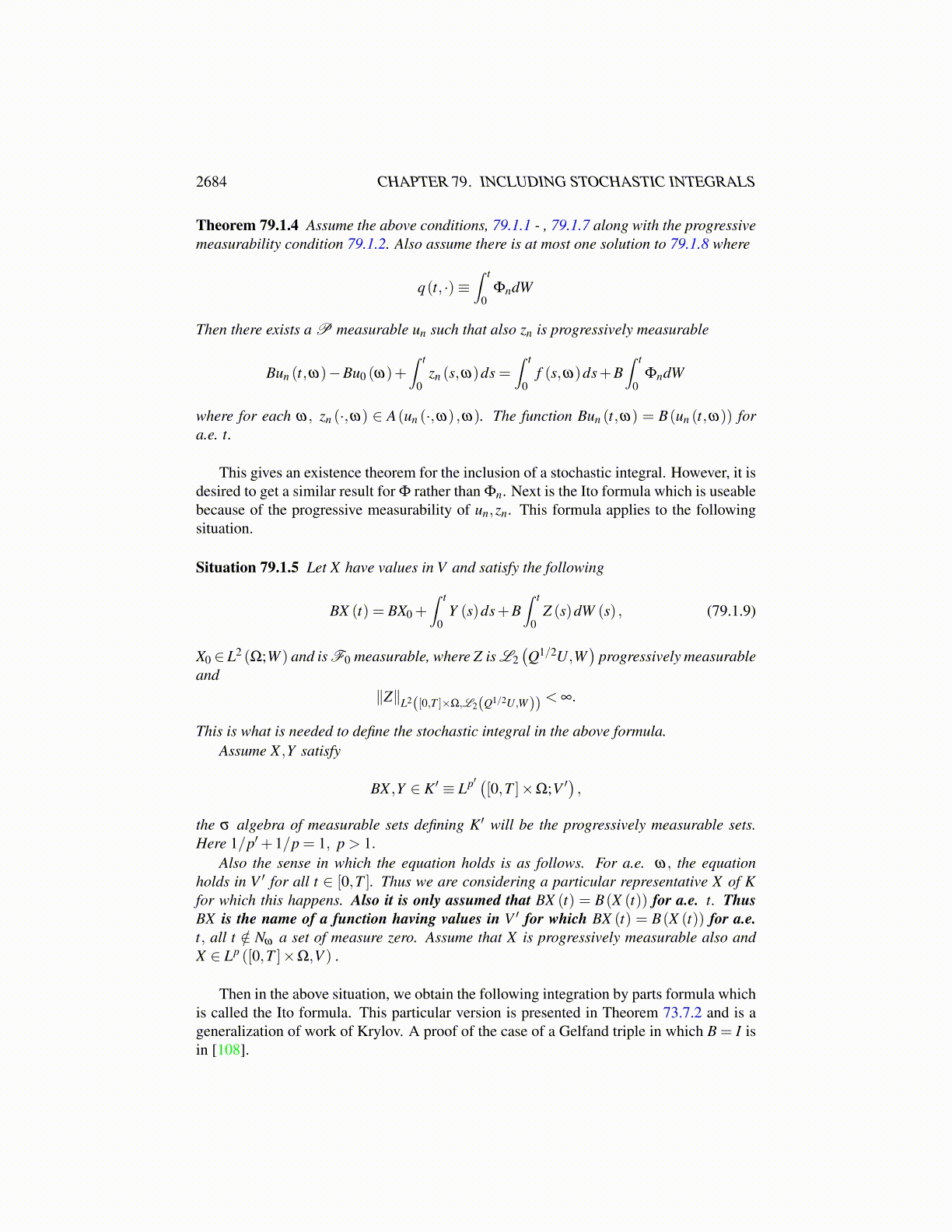
2684 CHAPTER 79. INCLUDING STOCHASTIC INTEGRALS
Then by the Kolmogorov Čentsov theorem, for γ as given,
E
(sup
0≤s<t≤Tsup
n
∣∣∫ ts ΦndW
∣∣(t− s)γ
)≤ E
(sup
0≤s<t≤T
∣∣∫ ts ΦdW
∣∣(t− s)γ
)≤C
where γ < β/α where, β +1 = α/2. Thus for γ < (α/2)−1α
,
supn
sup0≤s<t≤T
∣∣∫ ts ΦndW
∣∣(t− s)γ ≤C (ω)
for all ω off a set of measure zero.Recall the following conditions for the various operators.
Bounded and coercive conditions
A(·,ω) . A(·,ω) : VI → V ′I for each I a subinterval of [0,T ] I =[0, T̂], T̂ ≤ T
A(·,ω) : VI →P(V ′I) is bounded, (79.1.1)
If, for u ∈ V ,u∗X[0,T̂ ] ∈ A
(uX[0,T̂ ],ω
)for each T̂ in an increasing sequence converging to T, then
u∗ ∈ A(u,ω) (79.1.2)
Assume the specific estimate
sup{∥u∗∥V ′I : u∗ ∈ A(u,ω)
}≤ a(ω)+b(ω)∥u∥p−1
VI(79.1.3)
where a(ω) ,b(ω) are nonnegative. Note that here we use p and not p̂≥ p as done earlier.It is likely that this could be generalized by introduction of a suitable regularizing dualitymap multiplied by ε and letting ε → 0. You would do everything here adding in εF whereF is the duality map F : U →U ′ for r where r > p̂ ≥ p and keep it in the definition of A.Here U is a Hilbert space embedded compactly into V and dense in V . Then you would letε → 0 and observe that εFuε → 0 in U ′
r . Also assume the following coercivity estimatevalid for each t ≤ T and for some λ (ω)≥ 0,
inf(∫ t
0⟨u∗,u⟩+λ (ω)⟨Bu,u⟩dt : u∗ ∈ A(u,ω)
)≥ δ (ω)
∫ t
0∥u∥p
V ds−m(ω) (79.1.4)
where m(ω) is some nonnegative constant, δ (ω)> 0.
Monotonicity
It will also be assumed that λ (ω)B+A is monotone in the sense that∫ t
0⟨λ (ω)Bu+u∗−λ (ω)Bv+ v∗,u− v⟩ds≥ 0
for a suitable choice of λ (ω) whenever u∗ ∈ A(u,ω) ,v∗ ∈ A(v,ω).